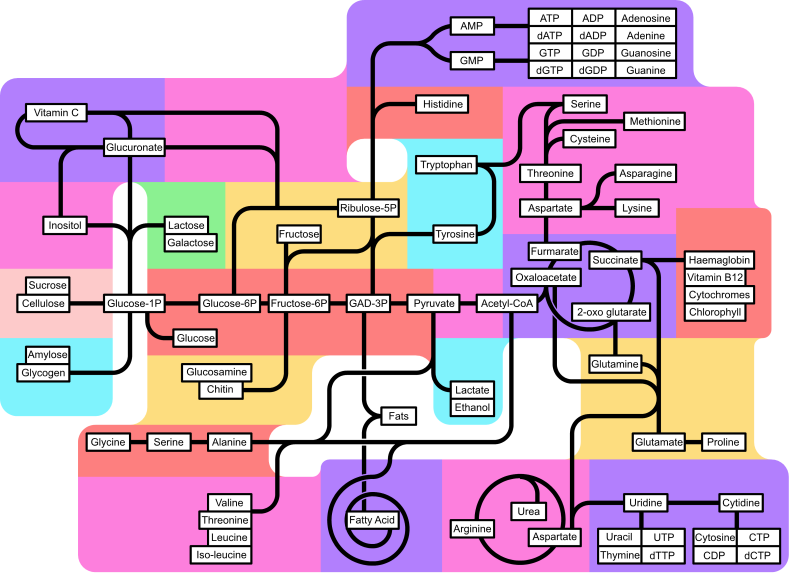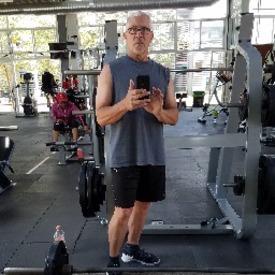How and when does FAT leave the body??
Replies
-
It isn't fat at that point - it is converted to FFA , then leaves the fat cell & goes into the blood, and then it is sent to and absorbed into muscle cells and burned there in the mitochondria. it's all in the article.
^this
Mitochondria is the powerhouse of energy cells.0 -
fat can leave 2 ways, and that depends on which fat youre talking about. fat that is undigested goes straight out the back end...so to speak. the fat stored in fat cells is broken down into 2 components glycerol and fatty acids. when your body is in the post-absorbative state (+/- 4 hours after eating) your brain still needs sugar/glucose that is no longer circulating in your blood so you liver starts playing chemist by breaking down fat and use part of it to fuel your muscles and other functions than your brain (fatty acids) and the glycerol goes into a processes called gluconeogenesis (creation of new glucose by putting together broken down fats and proteins) to be circulated to keep your brain functioning.
and THAT is how fat leaves...0 -
Just glad it does!(leave the body)0
-
I always wonder about this too, and no explanation has ever really cleared it up completely. There is 112 pounds of me GONE, and it seems like I should have seen it leaving!!
HA HA! Cute! That literally made me laugh!0 -
I have read that you keep the same number of fat cells but they shrink in size as you burn the fat.0
-
I have read that you keep the same number of fat cells but they shrink in size as you burn the fat.
And the double-bummer to that - when you pack it on, once they get big enough, you grow more cells that grow larger.
But when fat is lost, you don't lose the extra cells. Always more available to use for future.0 -
Fat is stored energy that your body can use. It is not as efficient as glucose but when your muscles are active and running low on energy (aka glucose being converted to ATP) they can covert it. Cells that are responsible for providing energy have organelles called mitochondria. The mitochondria are responsible for the process that creates the ATP. So, muscles that require lots of energy and especially quick energy, will have cells with many mitochondria present in each cell to try to keep up with the energy needs of the muscle. See mathjulz explanation for the remainder .... It is pretty darn good. You have a very good memory, mathjulz. I personally have CRS.

Energy can be gotten anaerobically as well. When muscles are at rest, they can tap into lipids for energy and conserve ATP, but this process is not efficient enough to provide necessary energy for lots of activity.
So, the more muscle you have......not just bulky, sexy, hot, muscle, but all muscle, including cardiovascular and smooth muscle, the more energy you will burn. Cardio and weight bearing exercises burn energy, build muscles that continue to burn energy, and make your insides happy, too. Smooth muscles can be found internally and help to move blood along your vessels, for instance. ( They surround the vessels. That is just one example of smooth muscle. ) you have 3 muscle types, smooth, skeletal, and cardio.
That's all I got without an anatomy and physiology lesson and ridiculously unpronounceable words.0 -
Like that:
 0
0 -
LOL!! Wow.. thanx0
-
I have read that you keep the same number of fat cells but they shrink in size as you burn the fat.
And the double-bummer to that - when you pack it on, once they get big enough, you grow more cells that grow larger.
But when fat is lost, you don't lose the extra cells. Always more available to use for future.
True.0 -
Easier visual to create in your mind. Take a bag of balloons. Inflate them they fill a car... Deflate them and they fit back into the bag... The adipose tissue doesn't go away (except thru liposuction or other extreme measures) it simply deflates the adipocytes by releasing the fatty acids that have been stored. These are used by other tissues in the body for reconstruction and energy. Your body if it has a caloric deficit triggers through hormones the release of these fatty acids from the adipocytes (individual cells within adipose tissue) and they travel in the bloodstream until used by the body, redeposited in adipose tissue, or targeted for waste removal when part of a defective cell structure...0
-
Very informative, thanks guys!
 0
0 -
Well duh! That's what Fire_Rock said just before you!! :laugh:Cell biology explanation:
Fat (lipids) are long chains of molecules. When the chains are broken in the right place, it liberates a lot of energy. The energy is used to turn ADP + phosphate into ATP, which is what cells use for energy (breaking it back into ADP + phosphate). So, you have this broken chain of molecules which are useless to the body. The blood pulls them from the cell (through the cell wall, the same way water, glucose chains, and everything else goes into and out of the cell). The kidneys (and sometimes liver, but mostly kidneys) filter the blood, pulling the broken chains out. This is part of what is in your urine. So, you pee out the remnants of the fat.
ETA: it's been almost 15 years since I took cell biology in college, so I'm sure I've forgotten a significant amount of the details, but I think I got the basics about right.0 -
When you are sleeping, the fat cells that you have p1ssed off that day pack their bags and leave, looking for someone who will feed them. If you eat too much, those wandering fat cells come to you in your sleep. They may or may not be delivered by a stork or some other wild life.
This is my absolute favorite explanation!!!0 -
I like the Dr. Who explanation.
Me too, lol!0
This discussion has been closed.
Categories
- All Categories
- 1.4M Health, Wellness and Goals
- 398.1K Introduce Yourself
- 44.7K Getting Started
- 261K Health and Weight Loss
- 176.4K Food and Nutrition
- 47.7K Recipes
- 233K Fitness and Exercise
- 462 Sleep, Mindfulness and Overall Wellness
- 6.5K Goal: Maintaining Weight
- 8.7K Goal: Gaining Weight and Body Building
- 153.5K Motivation and Support
- 8.4K Challenges
- 1.4K Debate Club
- 96.5K Chit-Chat
- 2.6K Fun and Games
- 4.8K MyFitnessPal Information
- 18 News and Announcements
- 21 MyFitnessPal Academy
- 1.5K Feature Suggestions and Ideas
- 3.2K MyFitnessPal Tech Support Questions












